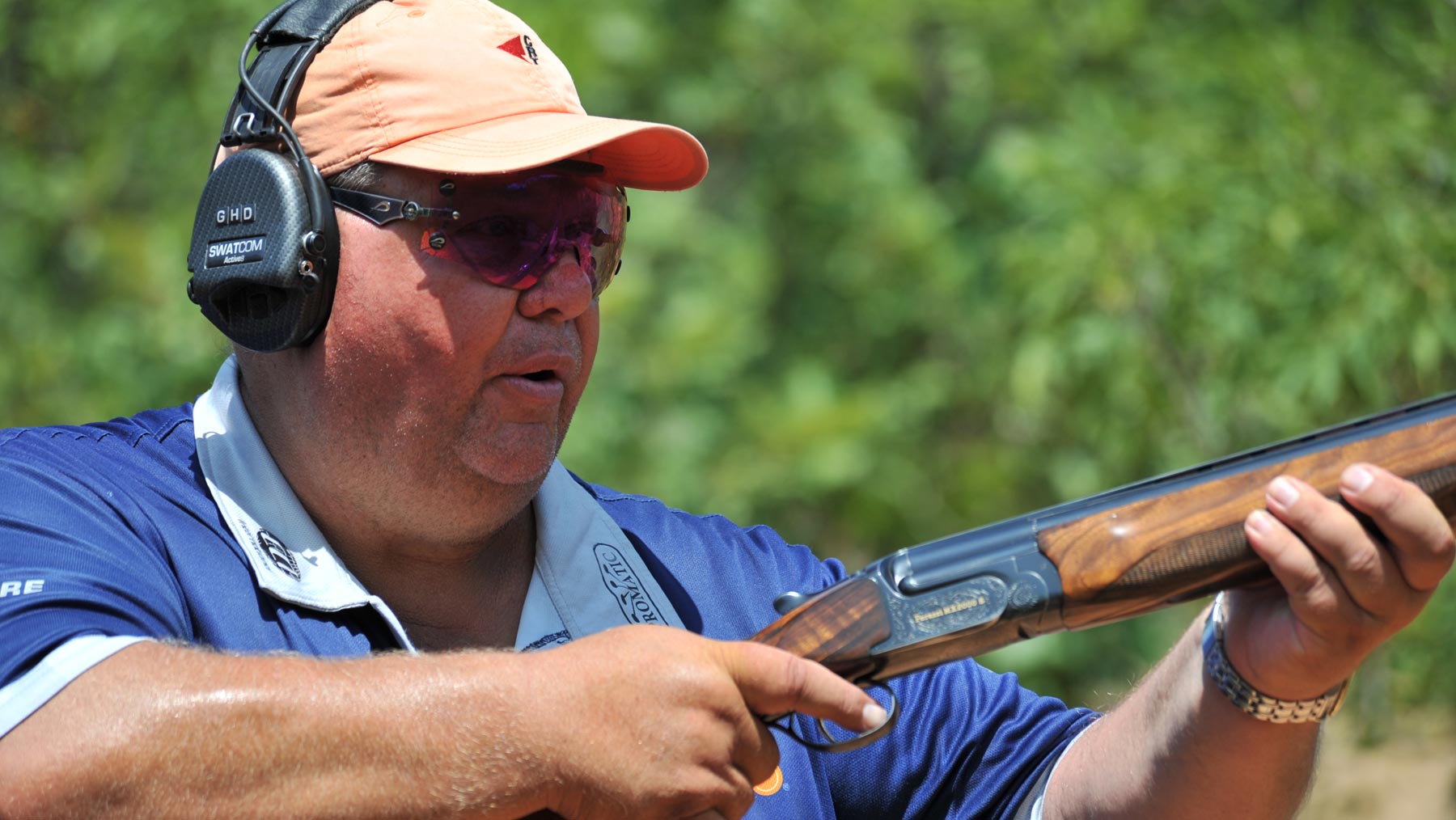I suppose I’m known as an over/under shooter, as I’ve used one for almost all of my sporting career. But I didn’t always shoot a Perazzi, which I use today. In fact, you’d be surprised just how much experimentation I did before I settled on my Perazzi.
In the beginning, I shot a Remington 1100 – the most popular semi-auto of its day. As good as it was, it wasn’t as reliable as today’s semi-autos and I had it in the shop as often as I had it in the field. I soon switched to a Miroku 800 HSW, a very nice Japanese-made game gun based on the same general action as the Browning Citori. Even though it was choked Full and Full, I shot it at skeet and did quite well with it, running my first 100 straight.
That was the beginning of my preference for Full chokes. To this day, I don’t have screw chokes in my gun. I know that if I get in front of the target and the clay flies into the shot string, I’m going to have a kill. I also have fewer decisions to make before shooting – I don’t have the option of twirling in a quarter choke or a skeet choke, so I just get on with the task at hand.
After the HSW I picked up a Parker Hale, this time a trap gun and again with Full chokes. I shot that gun at skeet and had my first big victory with it, the 1986 Home Internationals in skeet. I used it for sporting as well, along with a Browning A1 Sporter. The Parker Hale shot high, making downhill targets difficult. The Browning had a shorter stock and shot absolutely flat, so it worked a treat on downhill targets – I just shot right at the target’s bottom and the pellets were right where they needed to be. I carried both guns with me on the course, which may have looked silly, but that combination won me my first world championship.
Beretta came calling and I switched, in part because I was shooting a bit of double trap. Once again, I had two guns – a trap gun and a sporter with slightly more forgiving chokes, and I shot that combination until 1995.
After a few years I signed on with the Spanish company Kemen. Again, I shot two guns. This time, I had one with a shorter stock that let me mount quicker on fast going-away targets in FITASC. That was a great combination, but Kemen went through some difficult times and in 2001 I switched to Perazzi – and the rest, as they say, is history.
I started out with the same basic setup I use today, with 32-inch barrels in an MX-2000S. For a short time, perhaps four weeks or so, I played with 34-inch barrels. They handled beautifully, and if anything, I killed more hard targets with them than I did with my old favorites. But the balance wasn’t quite right for me and I gave away more close, quick targets than I should have. I switched back to 32s and that’s where I’ve stayed.
I do have a second pair of barrels, again 32 inch but choked 3/8s and 3/8s, which is about a light modified. I use them at Compak competitions where the targets are especially close, but day in and day out, I still prefer Full.
Both sets have a tapered rib, from 11 millimeters down to 7 at the muzzle, which I feel gives my eyes a focal point, a sort of tunnel vision that helps me concentrate on the target.
Instead of shooting two guns – one that patterned high and another low – I’ve compromised with a parallel stock that puts the pattern maybe 60 or 65 percent high. I like the parallel stock because no matter where I put my head on the stock I have the same view of the target.
I stuck with the MX-2000S model for fifteen years, but in 2016 I decided to change to the newer Perazzi High Tech. Even though I had won three World Championships the year before, I thought the High Tech would help me reach a new level. I’m a firm believer that you should change if you believe the change will make you better.
But that doesn’t happen very often. I was reasonably confident that my High Tech would see out my career, but that has not been the case. I am again shooting my MX2000S, which has given me great success over the last couple of years.
This article is adapted from 28-time world champion George Digweed’s videos on shooting, available at claytargetinstruction.com



0 Comments